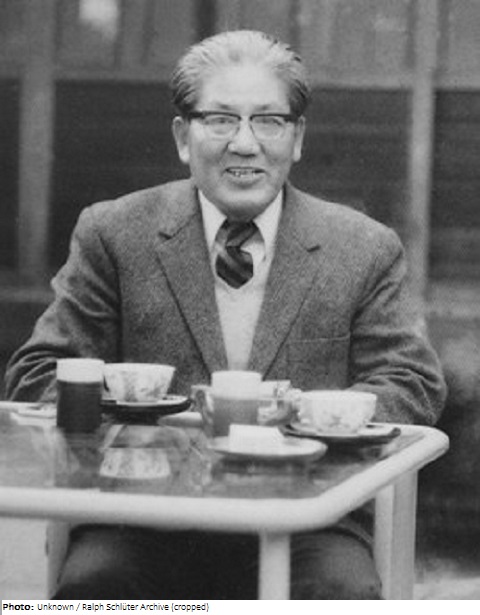Rikizo Takata

Biographical information
| Roles | Competed in Olympic Games |
|---|---|
| Sex | Male |
| Full name | Rikizo•Takata |
| Used name | Rikizo•Takata |
| Original name | 高田•力蔵 |
| Born | 18 October 1900 in Kurume, Fukuoka (JPN) |
| Died | 31 October 1992 (aged 92 years 13 days) in Itabashi, Tokyo (JPN) |
| NOC |  Japan Japan |
Biography
Japanese painter Rikizo Takata lived and worked in France for several years, where he replicated many masterpieces of art history at the Louvre museum. He painted landscapes in a style close to that of the Paris School, and succeeded in translating the essence of nature and Japanese cities and designs, and Japanese Western-style painting to the European one. Takata attended the Kawabata painting school and studied under Ishii Hakutei. He joined the Watercolor Society in 1926 and won his first award at the 14th annual Nika Exhibition and later became a member of the board for the spring exhibition.
In the final stage of World War II, Takata’s atelier in Tokyo burned down and he was evacuated to his hometown of Kurume. After the war, Takata continued to exhibit and paint replicas and also travelled frequently. One of his favorite landscape motives became the area around Mount Kujū in the Ōita prefecture. Takata illustrated, for instance, the novel Kyoto (Old Capital) by Nobel Prize winner Yasunari Kawabata with a series of very beautiful scenes from the Japanese country, especially from the island of Kyushu, and temples, gardens and palaces in the city of Kyoto. Takata died in the Teikyo University Hospital in Tokyo from heart failure secondary to peritonitis.
Results
| Games | Discipline (Sport) / Event | NOC / Team | Pos | Medal | As | |
|---|---|---|---|---|---|---|
| 1936 Summer Olympics | Art Competitions |  JPN JPN |
Rikizo Takata | |||
| Painting, Unknown Event, Open (Olympic) |
Errata
GN also seen as Takada